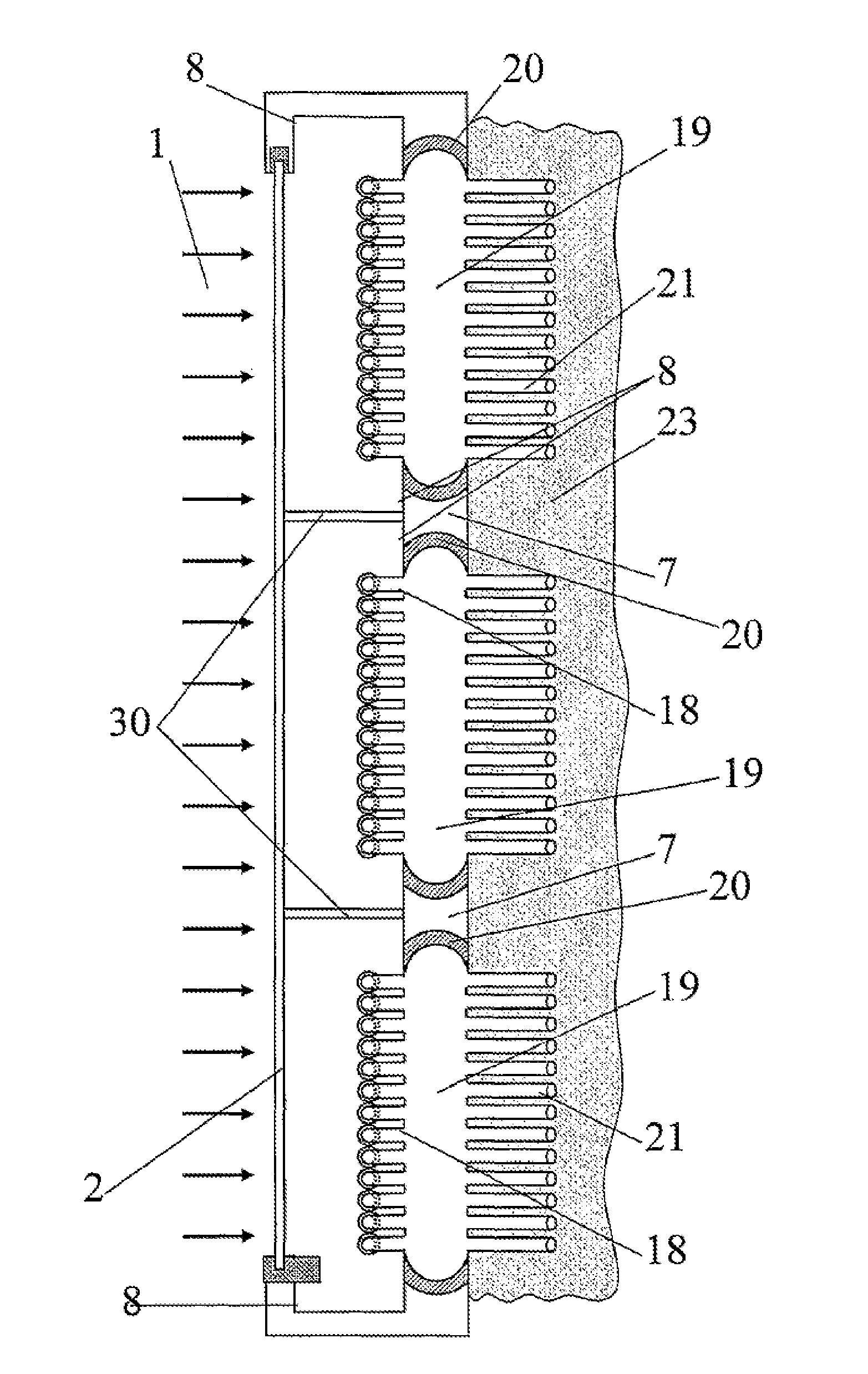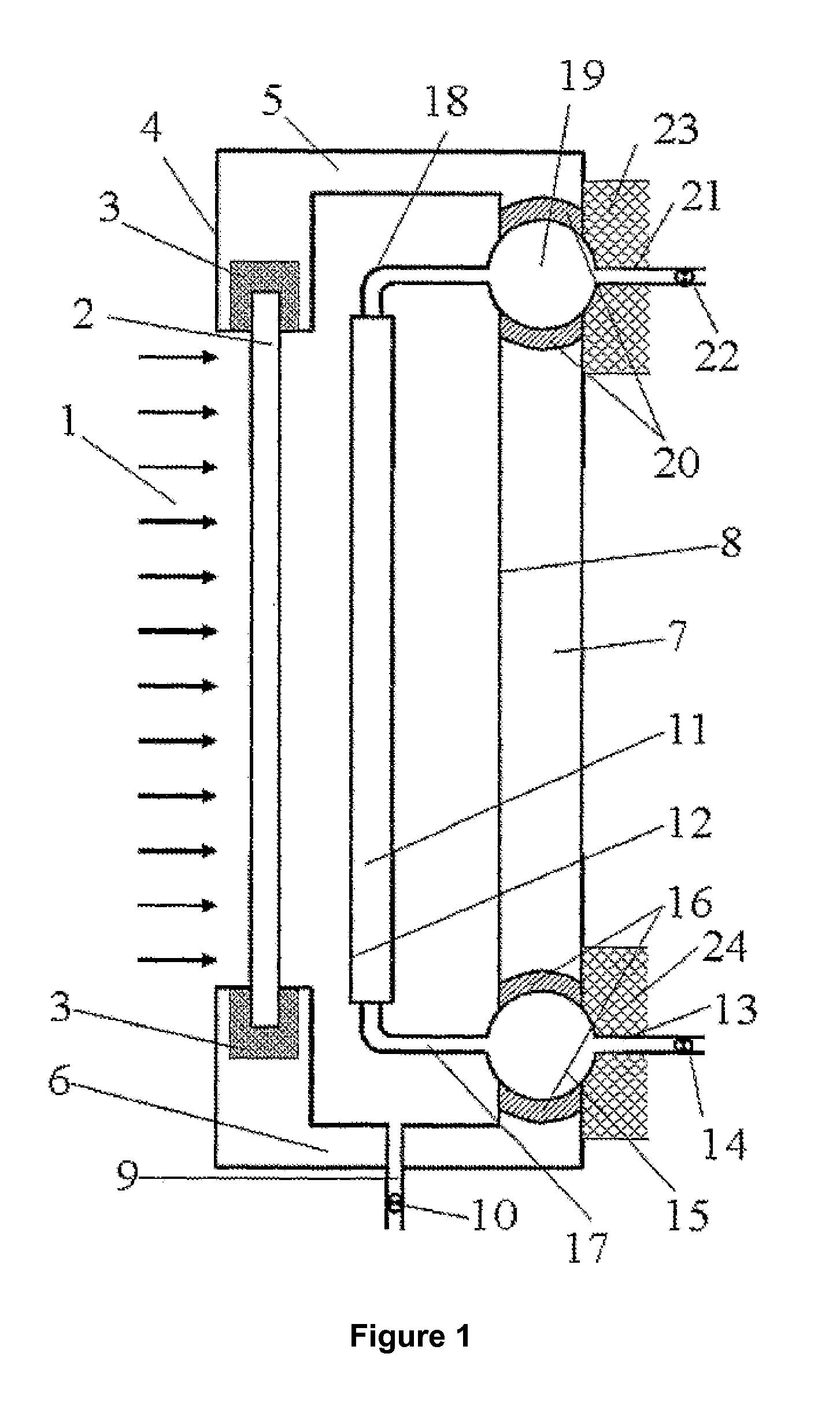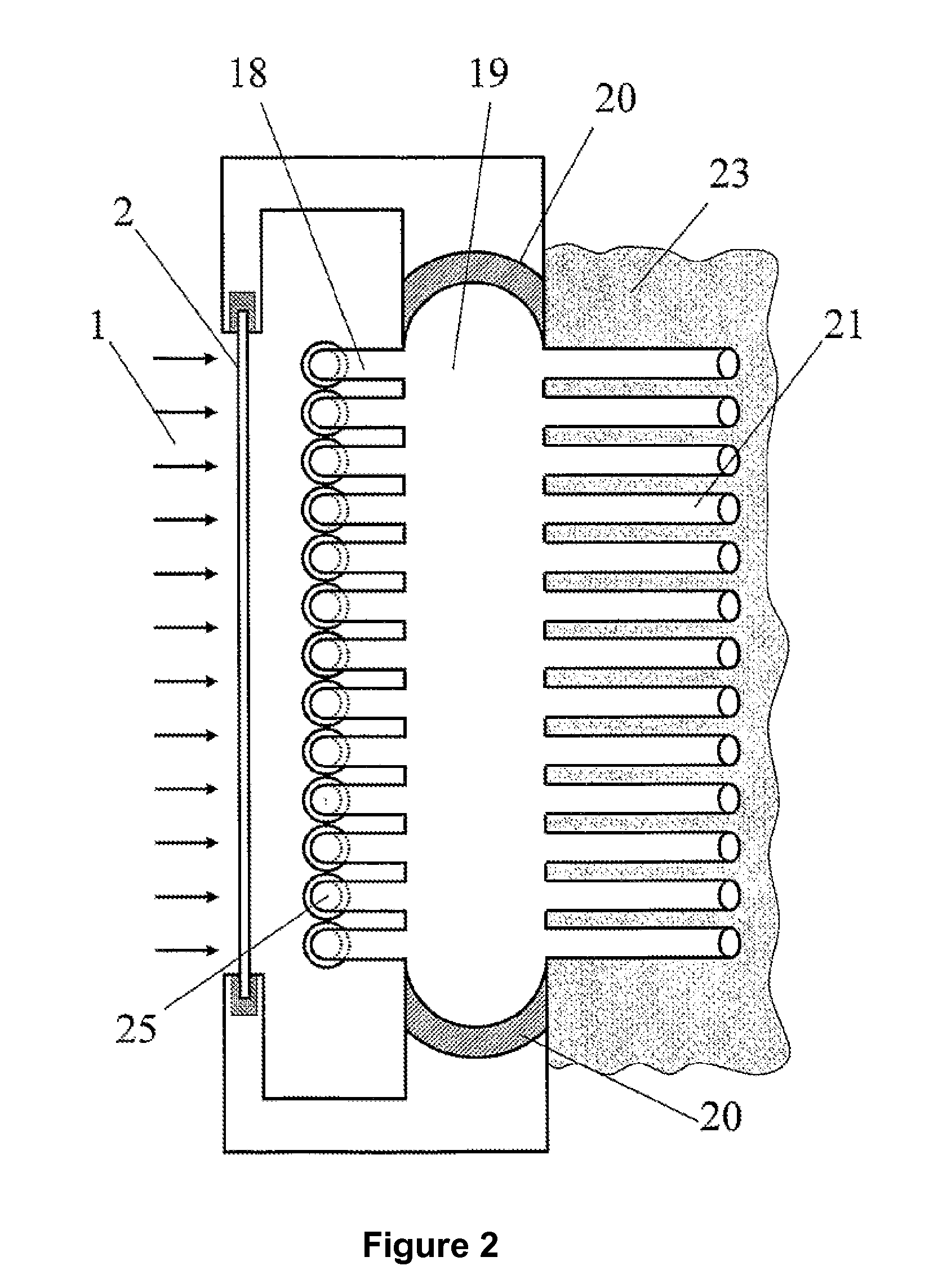Thermal solar energy collector
a solar energy collector and solar energy technology, applied in the safety of solar heat collectors, solar heat collector details, light and heating apparatus, etc., can solve the problems of air quickly oxidizing the external surface of air, reducing the effective collection of heat, and transferring heat to the heat-conducting fluid,
- Summary
- Abstract
- Description
- Claims
- Application Information
AI Technical Summary
Benefits of technology
Problems solved by technology
Method used
Image
Examples
Embodiment Construction
[0009]The invention consists in placing the radiation absorbent surface, and its matrix or supporting body, inside of which the heat-conducting fluid flows, in the interior of a big airtight box or receptacle that has a wall constituted by a transparent cover which is penetrated by the radiation to be absorbed; and the rest of the walls will be made of materials which will include mechanically strong structures, as well as thermal insulation; proposing an arrangement of the essential thermal component in such a way that it easily allows the assimilation of its expansions without altering the airtightness of the receptacle or box, which will be, in a first option of the invention, in vacuum conditions.
[0010]The component arrangement helps to minimize heat losses by conduction and convection towards the exterior; and the chemical aggression to the external layer of the radiation absorbent surface is minimized as well, thanks to the internal vacuum and the absence of oxygen. As an alte...
PUM
 Login to View More
Login to View More Abstract
Description
Claims
Application Information
 Login to View More
Login to View More - R&D
- Intellectual Property
- Life Sciences
- Materials
- Tech Scout
- Unparalleled Data Quality
- Higher Quality Content
- 60% Fewer Hallucinations
Browse by: Latest US Patents, China's latest patents, Technical Efficacy Thesaurus, Application Domain, Technology Topic, Popular Technical Reports.
© 2025 PatSnap. All rights reserved.Legal|Privacy policy|Modern Slavery Act Transparency Statement|Sitemap|About US| Contact US: help@patsnap.com



